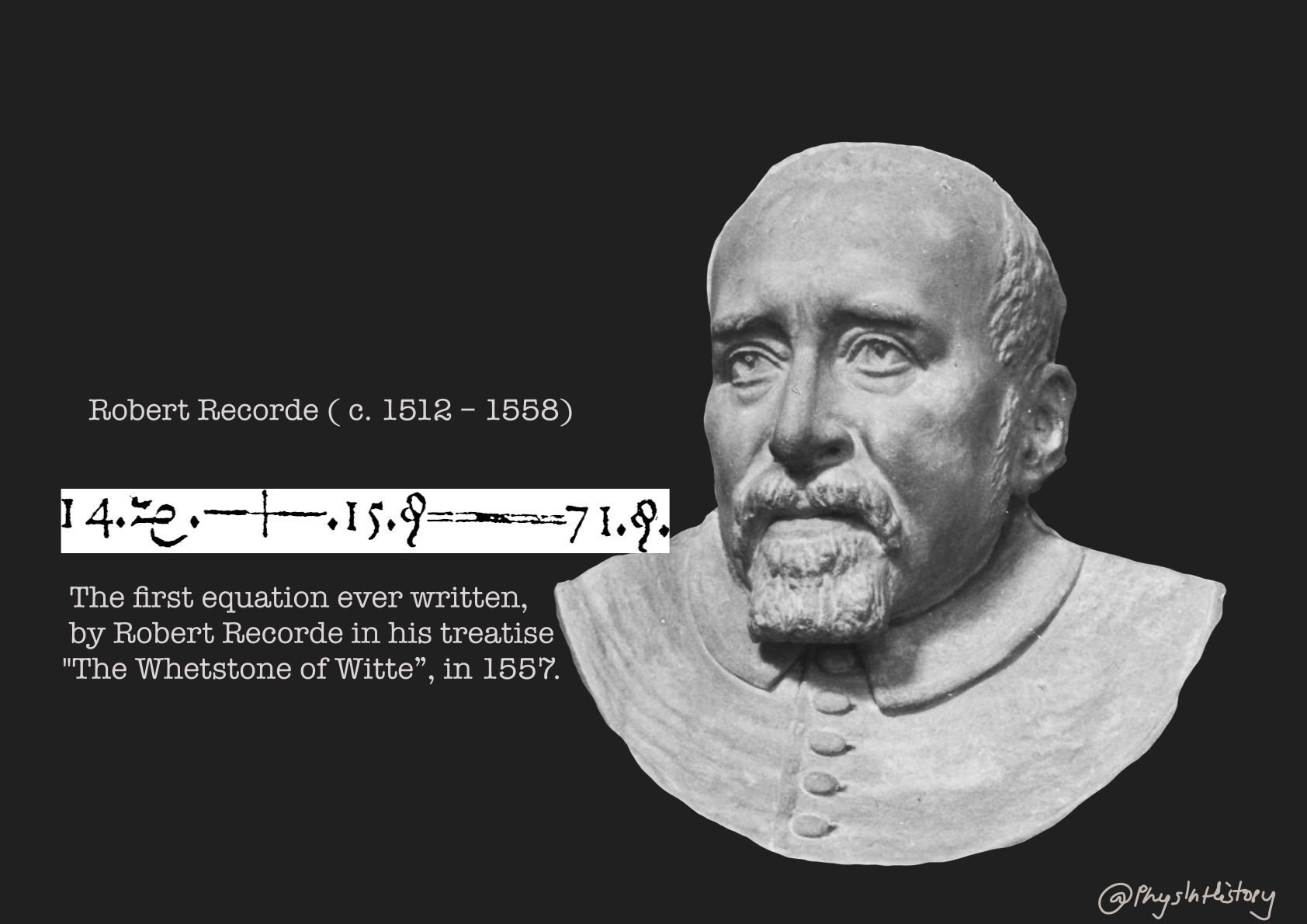Inventor of the equal sign: Who is Robert Recorde?
The origins of most mathematical symbols are lost in the foggy world of antiquity. But we know where the equal sign comes from.

Like it or not, we are surrounded by mathematical operations. But these operations aren't the only daunting thing about math; They are also symbols. In fact, mathematicians initially expressed mathematical operations with words, not symbols. However, the time they spent writing the processes took more time than the time they spent solving them.
Although it is unclear who first used most symbols, we do know who was the first to use two parallel horizontal lines of equal length. Robert Recorde, the subject of our article, was one of the scientists who came to this world before his time and passed away with a tragic end. He did many studies on economics, medicine, mathematics, and theology in the 16th century. But today we remember it with the equal sign.
Robert Recorde (c. 1510 – 1558) was a Welsh physician and mathematician. He invented the equals sign (=) and also introduced the pre-existing plus (+) and minus (−) signs to English speakers in 1557.
Who is Robert Recorde, the inventor of the equal sign?
Robert Recorde, born in 1510, received the title of medical doctor after a successful student life but did not practice his profession and became an auditor at the Bristol Mint in 1549. He worked in the Irish silver mines and the Dublin Mint between 1551 and 1553. However, this brilliant career ended with an argument with William Herbert.
In mutual defamation lawsuits, Robert Recorde was found guilty and fined a large amount. When he could not pay this money, he was sent to Kings Bench Prison in Southwark in 1558 and remained there until his death.
However, he would not remain idle in this process. He would write textbooks while he was in prison. The importance of the textbooks he wrote was that they explained astronomy, geometry, and arithmetic in English. Since he was the first person to use English instead of Latin, he would write his name in history as the founder of English mathematics.
These first easy-to-read English mathematics and astronomy books remained valid in England for a long time. These books made a significant contribution to England's scientific progress.
His first book, The Ground of Artes, covered practical calculation methods, such as handling Arabic numerals and calculating fractions and proportions. This information was very important in England during the period when trade gained importance.
In his second book, The Castle of Knowledge, he discussed astronomy. This book introduced the Copernican system to British readers for the first time. His work The Pathzvaie to Knowledge was a summary of Euclid's book Elements. His last work, The Whetstone of Witte, was an algebra book that covered topics such as solving equations, taking roots, and irrational numbers.
How Did the Equal Sign Enter Our Lives?
Until the 16th century, all mathematicians used their own equal signs. They had difficulty understanding each other because they did not have a common form of representation. For example, the ancient Greek mathematician Diophantus shortened the Greek word ίσος, meaning "equal", and used it as an equal sign.
In the future, other mathematicians would use other equal signs. For example, the German mathematician Regiomontanus preferred the hyphen as the equal sign. Again, Italian Mathematician Luca Pacioli adopted the underscore as equals. The modern equal sign would also be adopted around this time.
In his book titled “The Whetstone of Witte”, Robert Recorde first included various examples of addition and ended each time by saying “is equalle to”. However, after writing “equals” almost two hundred times, he could no longer bear it and decided to represent it with a symbol. He eventually designed the symbol “=====”. Additionally, + and – appeared in English for the first time in this book.
Recorde expressed his opinion in his work by saying: "Instead of using the word equal again and again tediously, I will put two parallel lines, as I usually do when working because nothing can be more equal than two parallel lines." By the way, as seen in the image, the equal sign at that time was a little longer than it is today.
The Equal Sign Was Not Easily Accepted
The concept did not become popular immediately, of course. After all, Latin was influential in the 16th century and the word “aequalis” was used in this language to mean equality. When people found it difficult to write this word, they shortened it to "ae" or "oe". However, when used with + and –, the equal sign really made calculations easier.
Meanwhile, other ideas continued to emerge. For example, mathematician Wilhelm Xylander proposed the idea of a double vertical line (||) as an equality sign. However, this symbol would not be accepted because it was confused with the symbol of the number Pi. The sign reached lasting popularity when Leibniz, who developed the theory of infinitesimals, used the "=" symbol at the end of the 1600s.
The equal sign was first used as part of a computer programming language in FORTRAN I in 1957. This symbolic language developed by Recorde laid the foundations of computer programming.
In conclusion;
Robert Recorde wanted to make science understandable and available to the public. And he succeeded in this aim. However, he worked in the wrong jobs and argued with the wrong people. And he forgot one very important fact, the aristocracy always wins, and indeed it happened. All that remains of him today is a monument in St Mary's Church in Tenby. But the most important thing is two parallel lines that we have drawn thousands of times throughout our lives...
